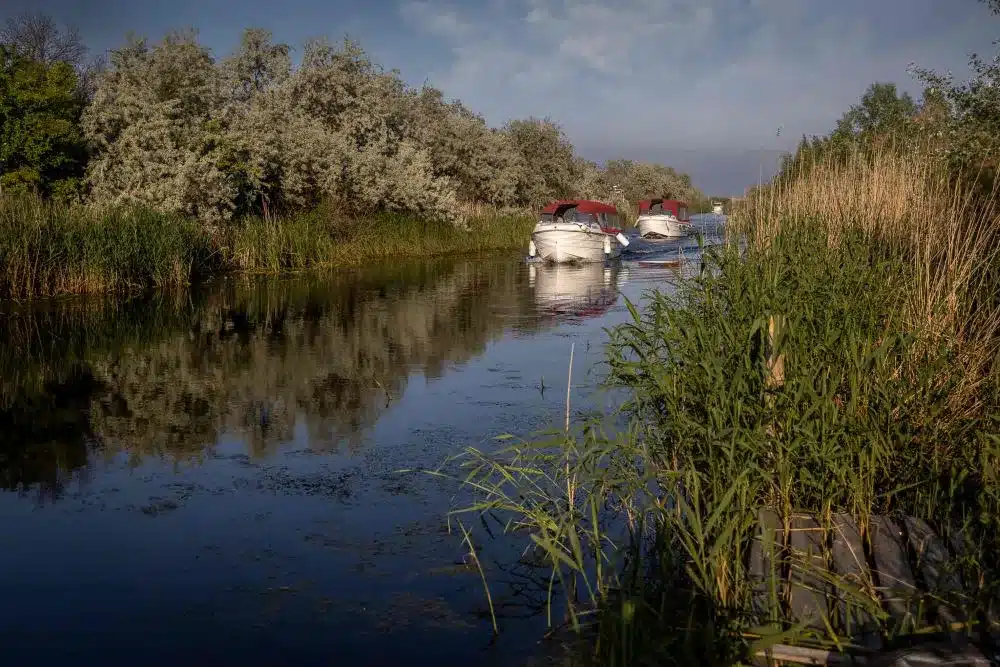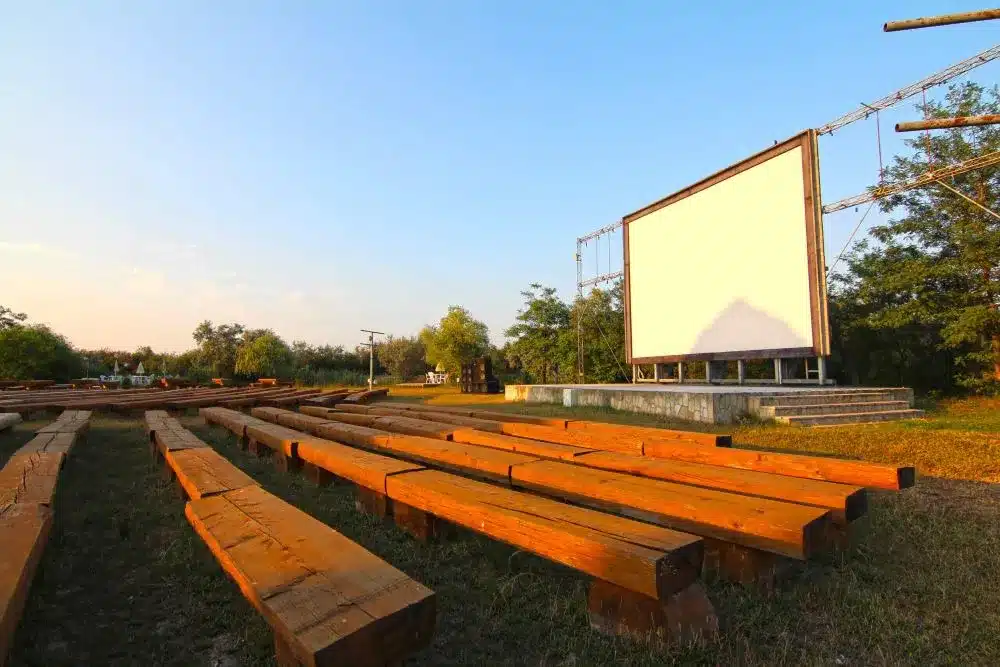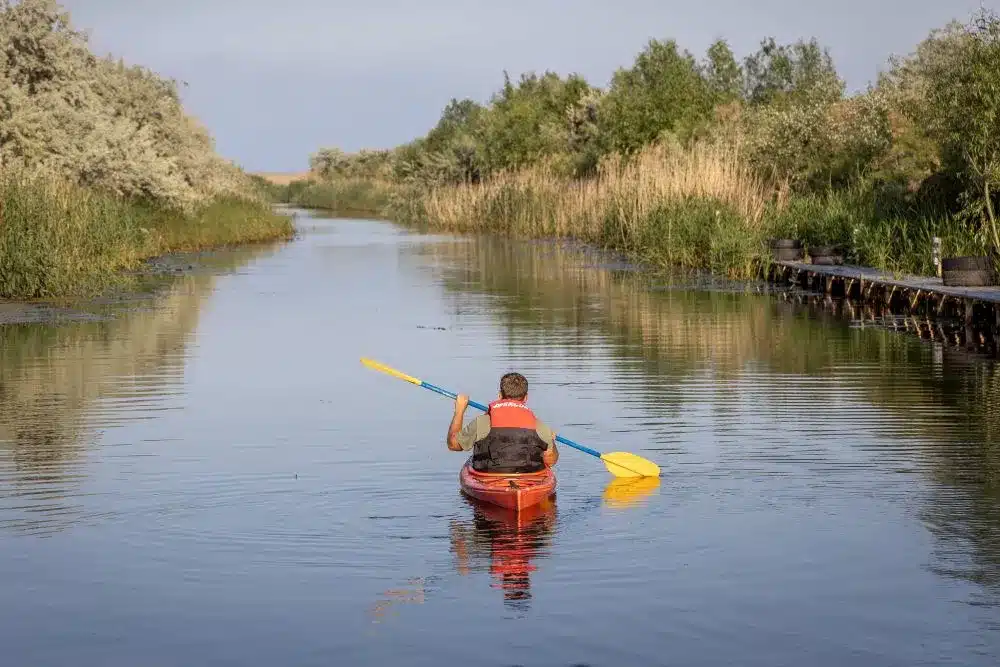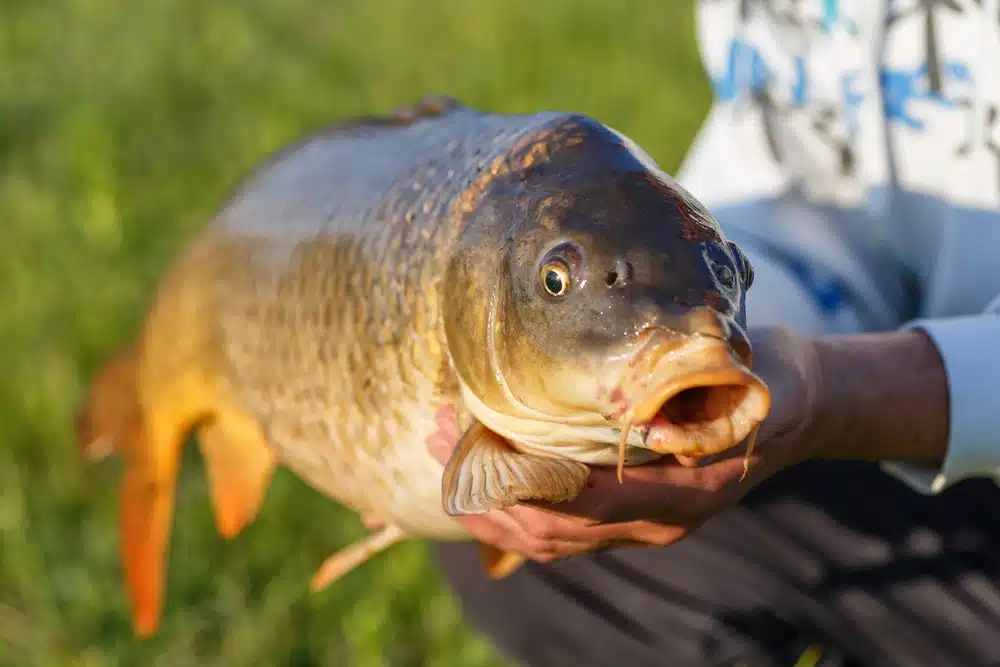Cuprins
- 1 Why is the Danube Delta called “fishermen’s paradise”?
- 2 Fishes of the Danube Delta – Catfish (Silurus glanis)
- 3 Fishes of the Danube Delta – Saithe (Esox lucius)
- 4 Fishes of the Danube Delta – Carp (Cyprinus carpio)
- 5 Fishes of the Danube Delta – Bass (Perca fluviatilis)
- 6 Fishes of the Danube Delta – Avat (Aspius aspius)
- 7 Fishes of the Danube Delta – Redspot (Scardinius erythrophthalmus)
- 8 Fishes of the Danube Delta – Linen (Tinca tinca)
- 9 Fishes of the Danube Delta – Saithe (Sander lucioperca)
- 10 Fish species in the Danube Delta – Plaice (Abramis brama)
The Danube Delta is a vast and vibrant ecosystem that reveals itself to the traveler who arrives here in all its splendor. This corner of natural paradise is inhabited by an incredible variety of life, which amazes anyone who ventures to explore it.
On a journey through the labyrinth of the Delta’s waters, you will discover, along with other Danube fauna, a rare diversity of fishes, each playing an essential role in the delicate balance of the ecosystem. Some hide in the reeds or the water bed, others make their way through the quiet waters of the canals and puddles. From the slow, lazy swimming catfish to the lively pike and perch, each species of fish has its own unique characteristics. Some are masters of mimicry, others capture their food with spectacular acrobatics.
Whether you are a fishing veteran or just discovering your passion for the sport of angling, the Delta offers its rich waters to all, and in the following pages we invite you to discover the surprising variety of fish species that live here.
- Why is the Danube Delta called “fishermen’s paradise”?
- Fishes of the Danube Delta – Catfish (Silurus glanis)
- Fishes of the Danube Delta – Saithe (Esox lucius)
- Fishes of the Danube Delta – Carp (Cyprinus carpio)
- Fishes of the Danube Delta – Bass (Perca fluviatilis)
- Fishes of the Danube Delta – Avat (Aspius aspius)
- Fishes of the Danube Delta – Redspot (Scardinius erythrophthalmus)
- Fishes of the Danube Delta – Linen (Tinca tinca)
- Fishes of the Danube Delta – Saithe (Sander lucioperca)
- Fish species in the Danube Delta – Plaice (Abramis brama)
Why is the Danube Delta called “fishermen’s paradise”?
Firstly, because this unique region is home to an impressive diversity of 133 types of fish and offers ideal conditions for fishing in a wild and beautiful environment. But that’s not the only thing that makes this area a dream destination for any fisherman.
Another reason is the beauty and tranquility of the nature of the Delta. Here, those who come in search of legendary catches can enjoy moments of contemplation and connection with their surroundings, away from the hustle and bustle of cities and everyday life.
Amidst the endless landscapes of reeds, quiet pools and enchanting canals, time seems to lose its meaning and every moment becomes a moment of peace and joy.
Another key aspect that makes the Danube Delta a paradise for fishermen is the conservation and protection of the environment.
Local authorities and organizations are working hard to maintain the delicate balance of the Delta ecosystem and ensure the sustainability of fisheries. In this way, fishermen can enjoy not only rich catches, but also participate in the protection of an exceptional natural environment.
👉 Few things are more beautiful than a fishing trip in the unique environment of the Danube Delta, and we can offer you the perfect accommodation for such an adventure.
Green Dolphin Camping’s cottages have a private entrance, a small patio, are equipped with everything you need and are the ideal place to rest between two fishing sessions in the Delta.

Green Dolphin Camping Cottages
Fishes of the Danube Delta – Catfish (Silurus glanis)
The Somn is a formidable predator, feeding on other species of fish, crustaceans, molluscs and even birds or small mammals. With its developed whiskers, the catfish easily locates its prey and prepares its attack, and is known for its ability to quickly surprise its victims.
In terms of habitat, the catfish finds shelter in a variety of aquatic environments in the Danube Delta. It likes to hide in reed thickets, under collapsed banks or in deep holes dug in the banks of rivers and pools. It prefers slower, deeper water where it can easily build hiding places and has access to a generous amount of food.
Time of year it can be fished: ideally during the warmer months when it is particularly active.
Effective lures: frogfish, chorus birds, black and red earthworms, spinner spoon, caraway, flounder, pheromones, nymphs, bird liver.
Fishes of the Danube Delta – Saithe (Esox lucius)
It is an elongated fish, covered with large scales and ranging in colour from shades of dark green to grey or brown, depending on the habitat. Its defining feature is its wide, sharp-toothed mouth, perfectly adapted for catching and swallowing prey.
In terms of food, pike are hungry predators, feeding on small fish, crustaceans, insects and other aquatic organisms. It lives in areas of slow or stagnant water, such as puddles, lakes and canals where water velocity is low. Likes to hide near reed thickets or other underwater structures where it can surprise prey.
Time of year when it can be fished: ideally from October to early winter. February and March are closed seasons.
Effective lures: live fish, artificial waders, twisters imitating small fish.
Fishes of the Danube Delta – Carp (Cyprinus carpio)
It is a large fish with a rounded, strong body, covered with large scales and a variety of colours from golden to green or brown, depending on its environment and the state of the water.
The carp is also equipped with a pair of sensitive whiskers, which help it to detect food and find its way in the underwater environment.
The carp is an omnivorous fish, feeding on an impressive variety of aquatic and underwater organisms. From algae and aquatic plants to insects, earthworms and even organic debris, carp are versatile consumers, adapting their diet according to the availability of resources in the environment.
Time of year when it can be fished: the early autumn months (September-October) are ideal. The prohibition period for carp is between April and June.
Effective baits: seed and corn mix, cornmeal, bread, boilies, pellets.
👉 It would be a shame not to take advantage of the trip to the Delta and see as much of its beauty as possible.
Green Dolphin Camping organizes boat trips on canals and lakes, to Sulina, to the Letea forest, to the Danube spill into the sea or to Gura Portiței, places where you can admire the Delta in all its fairytale beauty.

Boat trip in the Delta, Green Dolphin Camping
Fishes of the Danube Delta – Bass (Perca fluviatilis)
It is a fish with a wide mouth full of sharp teeth, perfectly adapted for catching and swallowing prey, consisting of crustaceans, insects and other small aquatic organisms. It feeds almost constantly and has a curious nature.
The bass prefers to live in the slow, deep water areas of the Danube Delta, such as pools, lakes and still water channels. It finds shelter near reed thickets, underwater structures or collapsed banks.
Time of year when it can be fished: it is particularly active during cold periods (autumn-winter), but can be caught throughout the year, except during the prohibition period – March-June.
Effective lures: worms, worms, small fish, tadpoles, leeches, leeches, rotating and oscillating spoons.
Fishes of the Danube Delta – Avat (Aspius aspius)
The physical characteristics of avatars are easily recognisable. It is a medium-sized fish with an elongated, laterally compressed body, covered with small scales and a silvery or bluish tinge, which gives it a special glow in sunlight. It prefers to live in flowing or deep water areas of the Danube Delta, such as rivers, canals and richly vegetated beds.
It is an aggressive predator, feeding on a variety of aquatic and underwater organisms, from minnows and crustaceans to insect larvae and other small organisms.
Time of year it can be fished: although it can be caught almost all year round, the best times are spring and autumn, according to experienced anglers.
Efficient lures: oblets, rotating and oscillating spoons, spinnertail.
Fishes of the Danube Delta – Redspot (Scardinius erythrophthalmus)
It is a small fish with an elongated and laterally compressed body, covered with small scales and a silvery tinge with lighter accents on the flanks. Its defining feature, which also gives it its name, is the red or orange stripe at the base of the pectoral fin.
It has a fairly varied diet: algae, various aquatic plants, larvae, fish smaller than its size, worms or worms. It prefers to live in the calm waters and pools of the Danube Delta, among water lilies or near underwater vegetation.
Time of year when it can be fished: all year round, except during the prohibition period for the Danube Delta (May-June).
Effective baits: grubs, worms, earthworms, corn, bread, twisters, oscillating or rotating spoons.
👉 After a successful fishing trip, a good movie in a relaxing atmosphere can be just what you need. The Green Dolphin Camping outdoor cinema is ready to offer you an experience you’d be hard pressed to find elsewhere: evenings of great films in a natural setting, caressed by the Delta breeze.

Outdoor cinema, Green Dolphin Camping
Fishes of the Danube Delta – Linen (Tinca tinca)
The flax stands out for its robust and rounded shape, with a green-brown tinge on the dorsal side. Like the carp, it has a prominent mouth with fleshy lips that help it find food on the bottom. It prefers calm, deep waters and slow-flowing channels, where it lives near underwater vegetation.
It has the same diet as carp, being omnivorous and feeding on worms, insect larvae, molluscs, algae and various organic debris.
Time of year when it can be fished: all fishing season (June-October).
Efficient baits: black and red worms, cornmeal, bread, corn.
Fishes of the Danube Delta – Saithe (Sander lucioperca)
With its imposing appearance and predatory abilities, the sand eel is one of the most desirable trophies for fishermen.
The physical characteristics of the halibut are remarkable. It is a large fish with an elongated, laterally compressed body covered with large scales, with a silvery or greyish-green hue, which gives it perfect camouflage in the turbid waters of the Danube Delta.
The shad is a voracious predator, feeding on a variety of smaller fish, crustaceans, molluscs and other aquatic organisms.
With impressive speed and agility, the shad easily locates its prey and launches a lightning-fast attack, and is known for its ability to capture its victims with precision.
Time of year when it can be fished: throughout the fishing season, but particularly in late summer and early autumn.
Effective lures: smaller live fish, fish pieces, twister, wobbler.
👉 If you’re naturally curious and love to explore, why not discover some great fishing spots yourself? At Green Dolphin Camping you can go for a kayak trip on the Danube, paddle relaxed on the Delta canals and find the best spot for your next casting adventure.

Kayaking on the Danube, Green Dolphin Camping
Fish species in the Danube Delta – Plaice (Abramis brama)
It is a medium-sized fish with a silvery or bluish-green tinge on the back and flanks and a white abdomen. Although it lives mostly in deep water, it occasionally comes to the surface in search of food.
It is an omnivorous fish, feeding on plankton, algae, small crustaceans, insect larvae or organic debris. The flounder is highly prized by fishermen and gourmets alike for its very tasty and tender meat.
Time of year when they can be fished: throughout the fishing season, but especially in the early autumn months when they gather in larger groups and are easier to catch.
Effective baits: black and red worms, worms, corn, pasta, bread.
The wealth of fish species in the Danube Delta is one of the most precious gifts of this exceptional natural region.
From the massive and imposing catfish to the playful and colourful red mullet, each fish species in the Delta brings uniqueness to a landscape of rare beauty.
Fishing these waters offers not only a memorable experience, but also the opportunity to connect with the majesty and wildness of nature.
Photo sources: Green Dolphin Camping, Shutterstock




